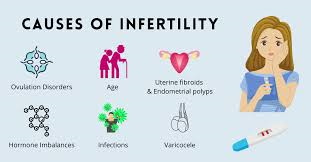
Introduction
Dopamine agonists, such as Cabergoline, play a crucial role in managing hyperprolactinemia-related disorders, including menstrual dysfunction, infertility, and pituitary tumors. As a potent dopamine D2 receptor agonist, Cabergoline (brand name Dostinex) effectively suppresses prolactin secretion, restoring hormonal balance and improving reproductive health.
This article explores the mechanism of action, clinical applications, dosing regimens (Cabergoline 0.5 mg and 0.25 mg), and therapeutic benefits of Cabergoline in treating hyperprolactinemia and associated conditions.
Understanding Hyperprolactinemia and Its Impact
Hyperprolactinemia, characterized by elevated prolactin levels, disrupts normal reproductive function. Common symptoms include:
-
Menstrual irregularities (amenorrhea, oligomenorrhea)
-
Infertility (anovulation, luteal phase defects)
-
Galactorrhea (inappropriate lactation)
-
Pituitary adenomas (prolactinomas)
Prolactin inhibits gonadotropin-releasing hormone (GnRH), leading to reduced follicle-stimulating hormone (FSH) and luteinizing hormone (LH) secretion. This hormonal imbalance causes ovulatory dysfunction and menstrual disturbances.
Cabergoline: Mechanism of Action
Cabergoline, a long-acting ergot-derived dopamine agonist, selectively stimulates dopamine D2 receptors in the pituitary gland. This action:
-
Inhibits prolactin secretion – Reduces prolactin synthesis and release.
-
Shrinks pituitary tumors – Decreases the size of prolactinomas by suppressing lactotroph cell proliferation.
-
Restores gonadal function and normalizes FSH and LH levels, promoting ovulation and menstrual regularity.
Compared to Bromocriptine (another dopamine agonist), Cabergoline has:
-
Higher receptor affinity
-
Longer half-life (allowing twice-weekly dosing)
-
Better tolerability (fewer side effects)
Clinical Applications of Cabergoline
1. Treatment of Hyperprolactinemia
Cabergoline is the first-line therapy for hyperprolactinemia due to its efficacy and safety.
-
Dosage:
-
Initial dose: Cabergoline 0.25 mg twice weekly
-
Titration: Increased to Cabergoline 0.5 mg twice weekly based on prolactin levels
-
Maintenance: Adjusted to the lowest effective dose
-
-
Efficacy:
-
Normalizes prolactin in 80-90% of patients
-
Restores menstruation in 70-80% of women
-
Improves fertility by inducing ovulation
-
2. Management of Prolactinomas (Pituitary Tumors)
Prolactin-secreting adenomas (prolactinomas) are the most common pituitary tumors. Cabergoline effectively:
-
Reduces tumor size (50-80% shrinkage in macroprolactinomas)
-
Alleviates mass effects (headaches, vision disturbances)
-
Prevents surgical intervention in most cases
3. Restoration of Fertility in Women
Hyperprolactinemia is a leading cause of anovulatory infertility. Cabergoline:
-
Induces ovulation by lowering prolactin
-
Improves pregnancy rates in women with infertility
-
Safe in pregnancy (discontinued upon conception)
4. Treatment of Galactorrhea
Cabergoline effectively suppresses inappropriate lactation (galactorrhea) by normalizing prolactin levels.
Dosage and Administration
-
Starting Dose: Cabergoline 0.25 mg twice weekly
-
Dose Adjustment: Increased to 0.5 mg twice weekly if needed
-
Monitoring: Prolactin levels checked every 4-6 weeks
-
Maintenance: Lowest effective dose to sustain normal prolactin
Special Considerations
-
Pregnancy: Discontinue upon confirmation (though no major teratogenic risk is reported).
-
Liver/Kidney Impairment: Dose adjustments may be needed.
-
Side Effects: Nausea, dizziness, hypotension (usually transient).
Advantages Over Bromocriptine
| Parameter | Cabergoline | Bromocriptine |
|---|---|---|
| Dosing Frequency | Twice weekly | Daily (2-3 times) |
| Tolerability | Better | More side effects |
| Efficacy | Higher success rate | Moderate efficacy |
| Half-life | ~65 hours | ~3-6 hours |
Safety and Side Effects
Cabergoline is well-tolerated, but potential side effects include:
-
Nausea, dizziness (usually subsides with continued use)
-
Headache, fatigue
-
Postural hypotension (rare)
-
Valvular heart disease (with long-term, high-dose use—rare at standard doses)
Conclusion
Cabergoline (Dostinex) is a highly effective dopamine agonist for treating hyperprolactinemia, menstrual dysfunction, infertility, and pituitary tumors. Its long half-life, superior tolerability, and high efficacy make it the preferred choice over older agents like Bromocriptine.
With proper dosing (Cabergoline 0.25 mg to 0.5 mg twice weekly), most patients achieve normal prolactin levels, restored fertility, and tumor regression. Regular monitoring ensures optimal outcomes while minimizing side effects.
For women struggling with irregular periods, infertility, or prolactinomas, Cabergoline offers a safe and reliable treatment, improving both hormonal health and quality of life.